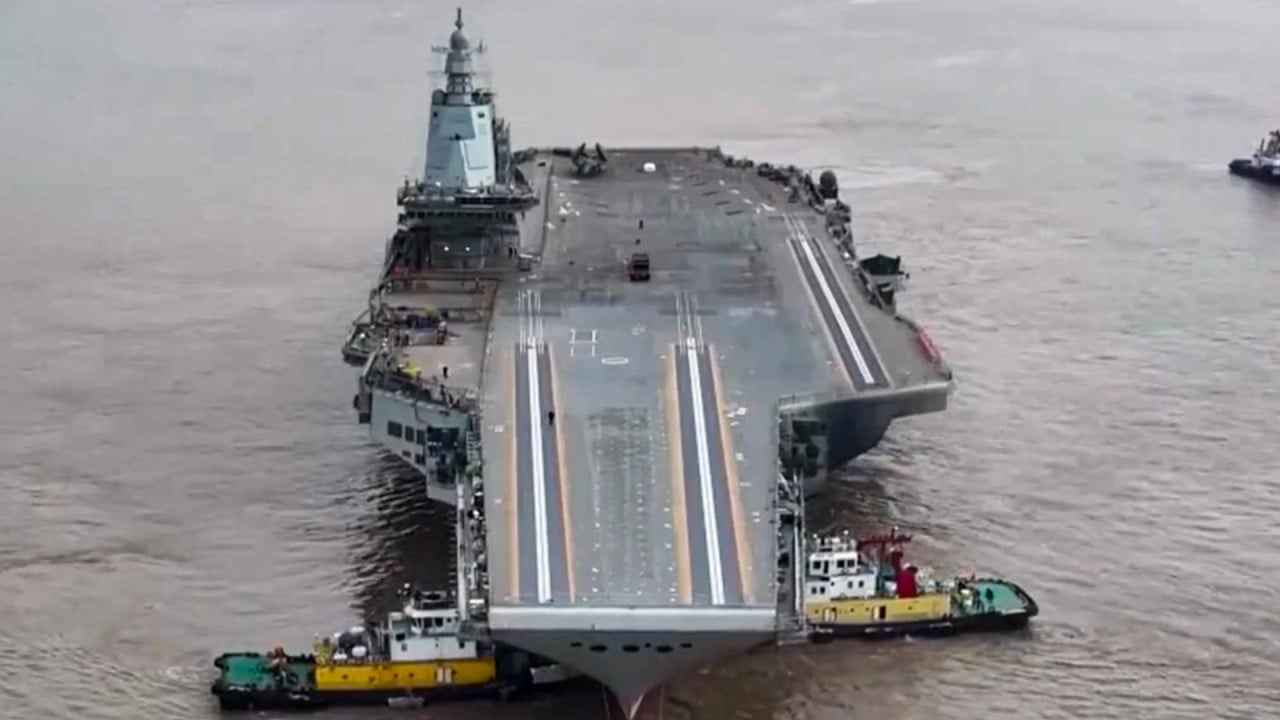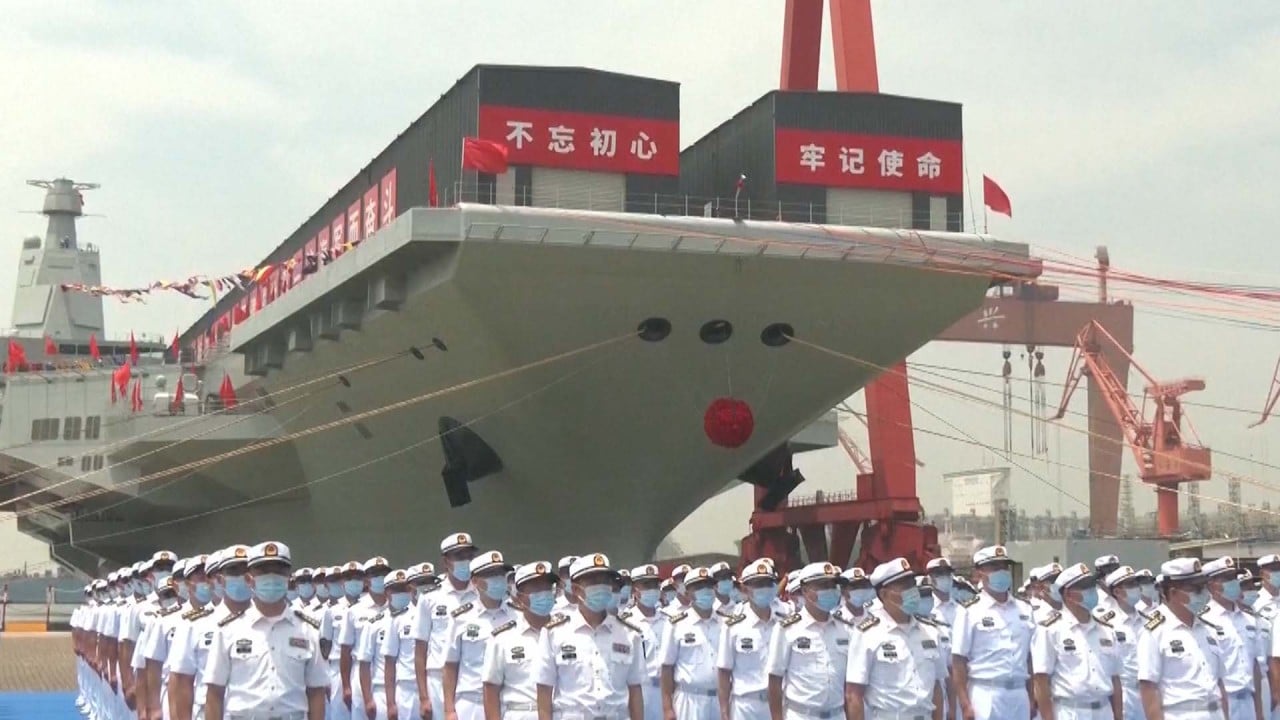“The Fujian is … currently the world’s largest known conventionally powered aircraft carrier by displacement,” CCTV said in a programme aired on Thursday. “In a sense, the larger the carrier’s displacement, the greater its combat power.”
The Fujian, China’s third aircraft carrier and its first built using a domestic design, was launched in June 2022.
At the time, authorities said its full load displacement – a key indicator of a ship’s carrying capacity, range, speed and manoeuvrability – was more than 80,000 tonnes.
In terms of size, it has often been compared with the US Navy’s decommissioned Kitty Hawk-class supercarriers, the biggest of which was the USS America with a full load displacement of about 85,000 tonnes.
The Fujian reportedly wrapped up its second sea trial earlier this month, following an eight-day maiden test voyage in May.
On Saturday, the US Navy aircraft carrier Theodore Roosevelt arrived in South Korea for a three-nation drill also involving Japan.
The three countries agreed to hold annual three-way exercises last year at a summit, where their leaders accused China of “dangerous and aggressive” behaviour in the South China Sea.
Taiwan’s defence ministry has also warned that the Fujian would pose a “substantial threat” in the event of a war.
Beijing regards Taiwan as part of its territory and has never renounced the use of force to regain control. Most countries, including the United States, do not recognise Taiwan as an independent state, but Washington opposes any attempt to take it by force and is committed to arming the island to help it defend itself.
The Fujian is China’s first aircraft carrier equipped with electromagnetic catapults, an advance that allows aircraft to be launched more frequently and heavier planes to lift off from its deck.
The nuclear-powered USS Gerald R. Ford – which at over 100,000 tonnes leads the world in full load displacement – is the only other aircraft carrier on the planet today with this advanced ability.
“The arrival of the Fujian has not only debunked, with its strength, the design theory that only nuclear-powered carriers can use electromagnetic catapults, but also elevated the combat capabilities of future domestically made carriers to another level,” CCTV said.
Information about new carrier-based aircraft for the Fujian will be released soon, the programme said. It also showed the Fujian making a sharp turn, noting that the carrier had effectively reduced its wake, reducing the ability of enemy weapons to locate and attack the ship.
Military analyst Cao Weidong told the broadcaster that the design of the Fujian was “much more complex” in some ways than that of its nuclear-powered peers, because it must ensure adequate electricity supplies for all devices.
He said the warship could carry more planes and thanks to its electromagnetic catapults, could launch fixed-wing early warning aircraft to improve airborne time, radar performance and command capabilities.
The catapult also means that warplanes can take off when carrying full fuel loads and ammunition, Cao added, reducing the need for refuelling aircraft and effectively freeing up space to carry more drones, transport planes and electronic warfare aircraft.
He said it would take up to two years to finish trials for the Fujian, adding: “The PLA Navy may build more aircraft carriers, potentially powered by nuclear energy.”
Cao, a former researcher at a PLA Navy-affiliated institute, also said that in future the navy would concentrate on building large ships and using information technology to win wars.



